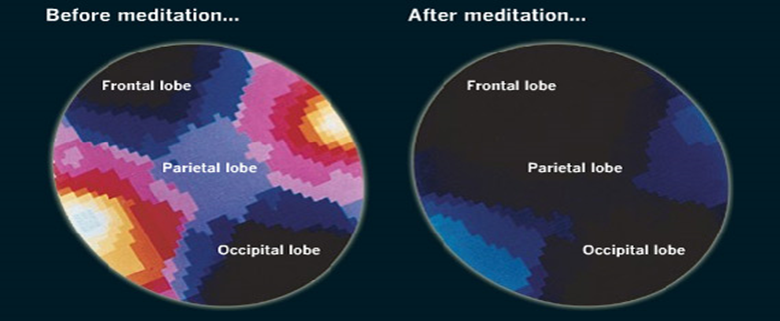The Effects & Benefits of Meditation
Meditation is most commonly known as a Relaxation effect. We can experience physical and mental relaxation as breathing becoming slower and more in-depth. The effect of Meditation will be pretty different depending on the skills and the method as well as the level of experience. However, the various effects can be expected such as anti-ageing, mental illness and relief of physical symptom as far as the soul cleansing. Some medical institutions in the world have been incorporated to appreciate the improvement of the body's symptoms and problems by "meditation".
It is also becoming common to adopt meditation into training among many corporations.
The followings are the list of the effectiveness of meditation.
Reduce
- Stress less
- Ditch depression
- Pain
- Reduce of ambivalence
- Tone down temper
- Anti-ageing
- Banish burnout
- Blood pressure, and risk of heart disease and stroke
- Headaches
- Anxiety & Fear
Improve
- Self-confidence
- Relaxation
- Clear mindedness
- Concentration / Focus
- Job performance improvement
- Build a better relationship
- Expand the capacity of awareness
- Sleep better
- More peace, serenity and the true happiness
- Open Heart
- Creativity
- Memory
There are over 5,000 peer-reviewed scientific researches about the effects and benefits of meditation on PubMed(NCBI, Meditation).
It is essential for modern society to recognise the meditation's benefits
from sophisticated investigations. However, it is not easy to explain
whether effectively working or not for those people who did not receive the
benefits and the reasons why. The effects are depending on the quality of
meditation, experience and biological conditions. The peer-reviewed
researches still have many ambiguous research outputs about meditation
effects. One of the biggest reasons that could be aware of it is that the
majority of the researchers have not met the “authentic purpose of
meditation”. If the purpose is the measurement, it should remain the same
measurement to use. The effects and benefits are the outcomes of the
“authentic purpose of meditation”, just like any tool has its purpose.
Otherwise, the quest goes in the wrong direction when “the purpose” is not
focused on authenticity.
At HADO Awareness, we aim to a holistic and authentic meditation that transcends boundarie
The word of Meditation as a recent trend often understand as relaxation and self-observation, and aiming mindfulness. In terms of the authentic Himalayan master’s meditation with five thousand years of history tells that authentic meditation is Samadhi, which is the extreme stage of the meditation to be enlightened and awakened.
Originally "meditation" is a natural occurrence as a result of many pieces of training, such as controlling desires, energy purification of body, mind, languages to use, food to eat, controlling senses, focus, self-observation, become oneness to every object, go over the mind and body. After all the training, ‘Samadhi’ the true mediation stage occurs.
It is clear that the practice of all the above could call meditation training. Meditation training has consequences by energy resonance with the wrong application. Therefore if you have negative feelings and depression, you could end up resonating to the negative energy to make any symptom worse in case of incorrect use of meditation training. I had seen a few people who had experienced such consequences in the past fifteen years when I was invited to attend casual meditation sessions.
In such a case, the meditation should cease immediately, and seek professional guidance to be consulted.

Inside the Meditating Brain
- Frontal lobe
This is the most highly evolved part of the brain, responsible for reasoning, planning, emotions and self-conscious awareness. During meditation, the frontal cortex tends = to go offline. - Parietal lobe
This part of the brain processes sensory information about the surrounding world, orienting in time and space. During meditation, activity in the parietal lobe slows down. - Thalamus
The gatekeeper for the senses, this organ focuses attention by funnelling some sensory data more in-depth into the brain and stopping other signals in their tracks. Meditation reduces the flow of incoming information to a trickle. - Reticular formation
As the brain’s sentry, this structure receives incoming stimuli and puts the brain on alert, ready to respond. Meditating dials back the arousal signal.
Reference
- Ozkaya.O 2009, Calming the mind, Freemeditation, viewed 17 March 2019, http://www.freemeditation.com/articles/2009/09/10/calming-the-mind/
- Pubmed.gov n.d., Meditation, viewed 17 March 2019, https://www.ncbi.nlm.nih.gov/pubmed/?term=meditation
